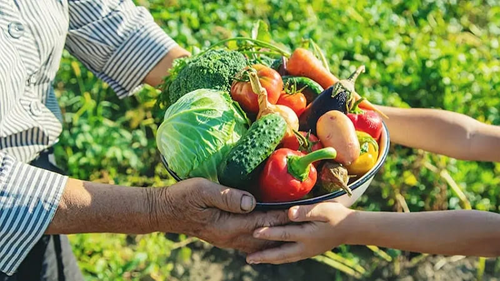
The Latin American and Caribbean Economic System (SELA) aims to overcome food vulnerability in the region and, to do so, considers it necessary to strengthen integration and generate a plan among the member countries of the organisation, which will allow them to make a common and collective front and to depend less on imports.
With this formula, Latin American and Caribbean nations will strengthen their markets by implementing mutual cooperation and boosting the commercial exchange of food products and other inputs that affect, directly or indirectly, any link in the chain that has an impact on overcoming the vulnerability that affects the region.
The Permanent Secretary of SELA, Clarems Endara, explained to EFE that in order to reach this point and see the most appropriate formulas, it is necessary to focus on three fundamental indicators on which food security depends: trade, crop pests and animal diseases, and climate change.
These indicators need to be considered on a country-by-country basis and then assessed as a whole to see how they work as a region, understanding that each nation has different circumstances, with very different strengths and weaknesses.
However, even the most favoured countries are affected by the shortcomings of their regional neighbours, a problem whose solution would be closer by strengthening a regional agenda to move jointly towards integration. According to Endara, progress has been made in this direction, but there is still “much to value and much to converge.”
And integration depends, fundamentally, on the will of the countries, as the work requires broad cooperation so that the competent authorities can provide accurate data to identify needs and make regional collaboration more efficient to ensure the implementation of stable and sustainable programmes.
Trade
This indicator shows how vulnerable a country is in relation to the lack of specific production. Once the situation has been studied, SELA tries to explain the value of a productive coordination that makes it possible to see inputs or products in the region itself, without resorting to markets in other continents.
It is then necessary to evaluate and analyse in depth whether a country buys everything it consumes or what percentage it depends on internal or external trade to ensure food security.
If, in some cases, even though they are major food producers, everything is exported, it is difficult for each country to achieve a balance in this respect, Endara explained. He confirmed that this issue has been discussed with specialised bodies and, after a major evaluation, it has been concluded that the region has a surplus in foreign trade in foodstuffs, but a deficit in fertilisers.
He explained that 78% of the fertilisers used in agriculture in Latin America and the Caribbean are imported, which poses “serious problems” for maintaining food security in the region.
To compensate for this, SELA suggests studying where some of these fertilisers can be sourced in the region itself, in order to reduce the importation of such a necessary element. But, once again, it is essential to bet on integration and real cooperation between countries to make the idea effective through a cooperative mechanism.
Plant and animal pests, the big enemy
Pests and animal diseases are a real threat that can wipe out crops or entire livestock farms in a short period of time, with the additional risk of rapidly transmitting the damage to other species.
An example of this is African swine fever, which led to the elimination of pigs decades ago in the Dominican Republic and Cuba, with major consequences for their economy and food balance.
Or the more recent case of Fusarium, a disease that attacks banana plants and all types of bananas in the region, so that just four outbreaks could wipe out the main export and consumption plantations in Latin America in five years.
Once again, integration plays an important role, because if a pesticide, insecticide, or veterinary drug – in the case of animals – is able to tackle the problem before it spreads, the benefit will be felt throughout the region. Perhaps the affected country does not have the product, while its neighbour does.
So, in order to stop the contagion, the nation that possesses it must provide it, choosing the integrative path, for the common good.
Climate change and prevention
Weather disasters caused by climate change are becoming more common and the trend is increasing, so there is an urgent need for cooperative solutions for prevention and early warning systems.
Most Latin American and Caribbean countries do not have satellites or equipment to anticipate adverse weather events such as floods or typhoons, or events such as earthquakes.
Others, however, have ranging systems to cover even neighbouring nations, which, although possible, is not implemented in practice. If agreements based on integration can be reached, equipment can be shared, providing support to those who do not have it.
In the medium to long term, the recipient country may be able to compensate the benefactor in various ways, such as supplying fertilisers, pesticides, or even basic grains from crops it has managed to save thanks to the alert detected by the neighbouring country’s satellite or system.
In this way, food vulnerability is reduced by not losing entire crops in advance of the event and by providing the means to save as much of the sown products as possible.
SELA reiterates that this is “as simple as making the exchange, but gaining the confidence of the authorities of the different countries to make it happen is the longest and most complex job.” And this is where the integration organisation is at its best.
